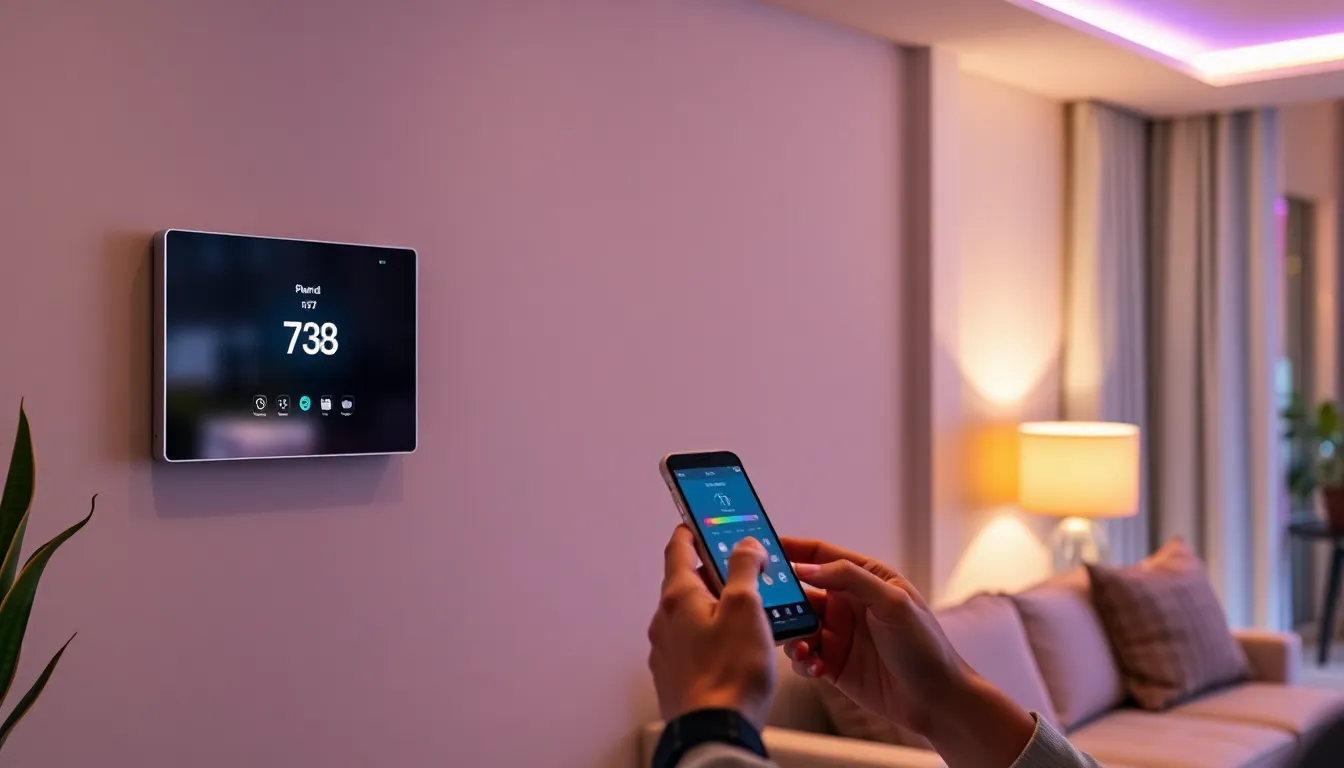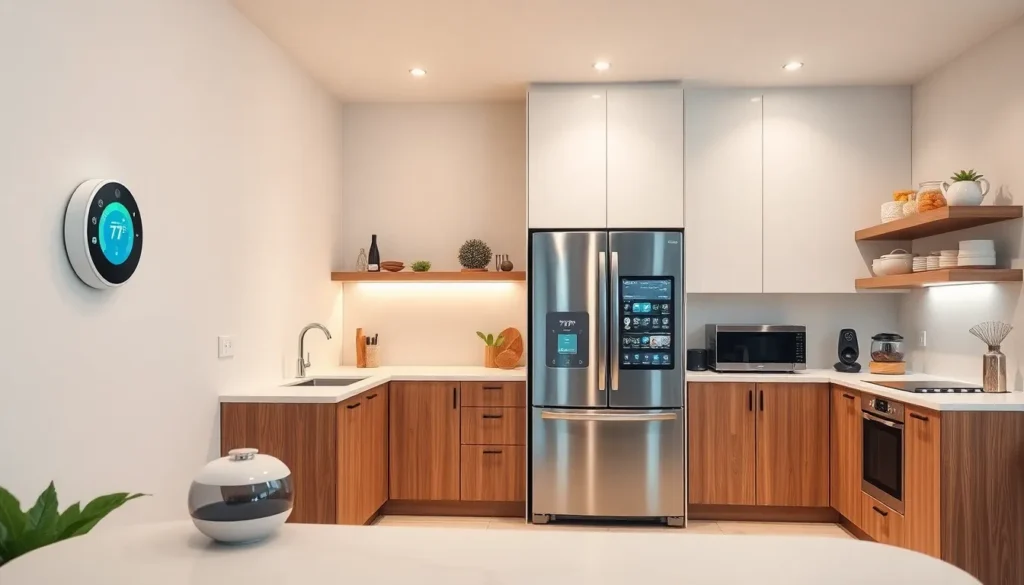Table of Contents
ToggleImagine a world where your fridge knows when you’re out of milk and your thermostat adjusts itself based on the weather forecast. Welcome to the Internet of Things, where everyday objects become smart companions. This quirky tech revolution is transforming mundane tasks into seamless experiences, making life easier and a bit more entertaining.
Overview of Internet of Things
The Internet of Things (IoT) connects various devices to the internet, enabling them to collect and exchange data. Smart home devices, such as thermostats and lights, enhance energy efficiency and convenience. Wearable technology, including fitness trackers, allows individuals to monitor their health metrics in real time.
Connected cars represent another significant area within IoT. They provide drivers with navigational assistance and alert them to potential hazards on the road. Industrial applications also leverage IoT technology, optimizing production processes through real-time data analytics.
Medical devices, such as remote monitoring systems, improve patient care by allowing healthcare providers to track vital signs. Smart cities utilize IoT to enhance urban living, facilitating traffic management and waste reduction through connected infrastructure.
Retailers depend on IoT solutions for inventory management. Sensors help track stock levels, ensuring product availability and reducing waste. Logistics companies leverage IoT to enhance supply chain visibility, improving delivery efficiency.
Agriculture incorporates IoT technology to monitor soil conditions and optimize water usage. Farmers can analyze data to increase crop yields while conserving resources.
IoT applications transform numerous sectors by providing actionable insights and fostering efficient communication among devices. Such innovations emphasize the importance of connectivity in today’s technology-driven landscape.
Smart Home Devices

Smart home devices exemplify the Internet of Things by enhancing convenience and efficiency in daily living. These devices connect seamlessly, allowing homeowners to manage their environments with ease.
Smart Thermostats
Smart thermostats promote energy conservation while optimizing comfort. Devices like the Nest Learning Thermostat adapt to user behavior, automatically adjusting temperature settings based on daily habits. Users can control these thermostats remotely through smartphone apps, ensuring an efficient energy profile. By analyzing data, smart thermostats help reduce energy bills and enhance climate control, contributing to sustainability initiatives.
Smart Lighting
Smart lighting systems elevate home ambiance while improving energy management. Products such as Philips Hue enable users to customize lighting colors and intensities via mobile applications. These systems can be scheduled or controlled remotely, making it easier to maintain security while away from home. Smart lighting solutions also integrate with voice-activated assistants, allowing for hands-free adjustment. Using motion sensors, lights automatically turn on or off, ensuring energy is not wasted when spaces are unoccupied.
Wearable Technology
Wearable technology represents a key component of the Internet of Things, offering a direct link between users and their health metrics. Devices in this category provide real-time data monitoring and analysis.
Fitness Trackers
Fitness trackers collect various health-related data. These devices measure steps taken, heart rate, and calories burned. Many models integrate with mobile apps to offer personalized feedback. Popular examples include Fitbit Charge and Garmin Forerunner. Users access insights to improve their fitness routines and track long-term health goals. These gadgets encourage users to lead healthier lifestyles through goal setting and progress monitoring.
Smartwatches
Smartwatches combine functionality and connectivity. They provide notifications for calls, messages, and app alerts while also tracking fitness metrics. Examples such as Apple Watch and Samsung Galaxy Watch feature heart rate monitoring and GPS capabilities. Users often customize their watches with different apps to enhance usability. Integration with smartphones allows for seamless connectivity, making it easy to remain updated on important tasks. Overall, smartwatches blend convenience and health tracking in a single device.
Industrial Applications
Industrial applications of the Internet of Things (IoT) significantly enhance operational efficiency and reduce costs. Real-time data collection and analysis transform manufacturing and logistics sectors.
Predictive Maintenance
Predictive maintenance utilizes IoT sensors to monitor equipment conditions continuously. Sensors collect data on variables such as temperature, vibration, and pressure. When anomalies occur, alerts notify maintenance teams. This proactive approach minimizes downtime by addressing issues before they escalate. Organizations like GE use predictive maintenance strategies, resulting in a reported 10 to 15 percent reduction in maintenance costs. Companies now rely more on IoT for optimized equipment performance and longevity.
Supply Chain Management
Supply chain management benefits from IoT through improved visibility and control. IoT devices track inventory levels, shipments, and environmental conditions. Data-driven insights help organizations optimize supply chain processes. For example, companies like Amazon employ IoT-enabled RFID technology to streamline inventory management. This enhances accuracy and boosts efficiency across operations. A 2019 study found organizations implementing IoT in supply chains achieved up to 30 percent cost savings. Real-time data empowers businesses to make informed decisions quickly and effectively.
Healthcare Innovations
Healthcare innovators are leveraging IoT technology to enhance patient care and streamline operations. Remarkable advancements in remote patient monitoring and smart medical devices showcase the impact of this technology.
Remote Patient Monitoring
Remote patient monitoring uses IoT-enabled devices to track patients’ vital signs in real time. Devices like blood pressure monitors and glucometers automatically send data to healthcare providers, allowing for timely interventions. Reports indicate that patients with chronic conditions benefit significantly from these systems, reducing hospital visits by up to 30 percent. Continuous monitoring enhances patient engagement, empowering individuals to take charge of their health. With alerts for any anomalies, providers can proactively address issues before they escalate. Collectively, these advancements lead to improved outcomes and greater patient satisfaction.
Smart Medical Devices
Smart medical devices enhance diagnostics and treatment processes, integrating seamlessly into healthcare systems. Examples include connected inhalers and smart insulin pens, which help manage conditions such as asthma and diabetes. These devices often collect usage data, providing insights to both patients and healthcare teams. Studies show that patients using smart devices adhere better to treatment plans, resulting in improved health management. Additionally, these innovations streamline workflows for healthcare providers, minimizing errors and saving time. By facilitating better communication between patients and providers, smart medical devices represent a vital leap forward in patient-centered healthcare.
The Internet of Things is revolutionizing how people interact with their environment. From smart homes to connected healthcare devices the impact is profound and far-reaching. As technology continues to evolve the possibilities for IoT applications will only expand.
Businesses and individuals alike are embracing these innovations to enhance efficiency and improve quality of life. The integration of IoT into everyday activities not only simplifies tasks but also fosters a more connected and responsive world. As these technologies become more prevalent the future promises even greater advancements that will continue to shape daily experiences.







